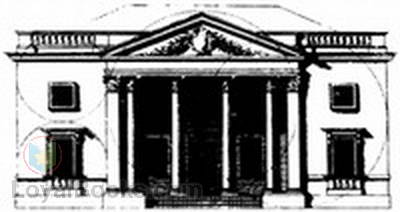The Art of Architecture A Poem In Imitation of Horace's Art of Poetry By: Anonymous |
|---|

In "The Art of Architecture: A Poem In Imitation of Horace's Art of Poetry" by Anonymous, readers are presented with a unique perspective on the world of architecture. Drawing inspiration from Horace's famous work on poetry, the anonymous author skillfully crafts a poetic treatise that delves into the deeper essence of architectural creation.
The book successfully captures the beauty and intricacy of architecture as an art form. It explores the various aspects that make a building truly remarkable, from its structure and design to the emotional response it evokes in the beholder. Through eloquent verses and vivid imagery, the author transports us to the very heart of architectural creation, encouraging us to appreciate the craftsmanship and ingenuity behind each masterpiece.
What sets this book apart is its clever use of imitation. By emulating Horace's style, the anonymous author pays homage to a classical tradition while infusing it with a fresh perspective on architecture. This approach not only engages readers with the richness of language and poetic devices but also adds a layer of intellectual depth to the exploration of architectural concepts.
Moreover, the book's depth lies in its ability to transcend the technical aspects of architecture and delve into its philosophical and emotional dimensions. It showcases how architecture serves as a reflection of society, culture, and human experience. The author implores readers to consider the profound impact that architecture has on our lives, our perceptions, and our collective memory. Through introspective verses, the book prompts us to question the relationship between our built environment and our own existence.
However, one minor drawback of the book is its anonymity. While the writing is undoubtedly skillful, it would have been insightful to know the perspective and expertise of the author. A brief introduction or author's note could have enriched the reading experience and provided readers with a better understanding of the writer's background and motivations.
Overall, "The Art of Architecture: A Poem In Imitation of Horace's Art of Poetry" is a captivating literary exploration of the world of architecture. Its poetic prowess and philosophical insights make it an engaging read for both architecture enthusiasts and anyone interested in the intersection of art, culture, and human experience. By capturing the essence of architectural creativity and eliciting a deeper appreciation for the structures that surround us, this book emerges as a thought-provoking and enriching addition to the canon of architectural literature. The Art of Architecture A POEM In Imitation of Horace's ART OF POETRY (Anonymous) (1742) Introduction by William A. Gibson PUBLICATION NUMBER 144 WILLIAM ANDREWS CLARK MEMORIAL LIBRARY University of California, Los Angeles 1970 GENERAL EDITORS William E. Conway, William Andrews Clark Memorial Library George Robert Guffey, University of California, Los Angeles Maximillian E. Novak, University of California, Los Angeles ASSOCIATE EDITOR David S. Rodes, University of California, Los Angeles ADVISORY EDITORS Richard C. Boys, University of Michigan James L. Clifford, Columbia University Ralph Cohen, University of Virginia Vinton A. Dearing, University of California, Los Angeles Arthur Friedman, University of Chicago Louis A. Landa, Princeton University Earl Miner, University of California, Los Angeles Samuel H. Monk, University of Minnesota Everett T. Moore, University of California, Los Angeles Lawrence Clark Powell, William Andrews Clark Memorial Library James Sutherland, University College, London H. T. Swedenberg, Jr., University of California, Los Angeles Robert Vosper, William Andrews Clark Memorial Library CORRESPONDING SECRETARY Edna C... Continue reading book >>
|
| eBook Downloads | |
|---|---|
|
ePUB eBook • iBooks for iPhone and iPad • Nook • Sony Reader |
Kindle eBook • Mobi file format for Kindle |
|
Read eBook • Load eBook in browser |
Text File eBook • Computers • Windows • Mac |
| Review this book |
|---|